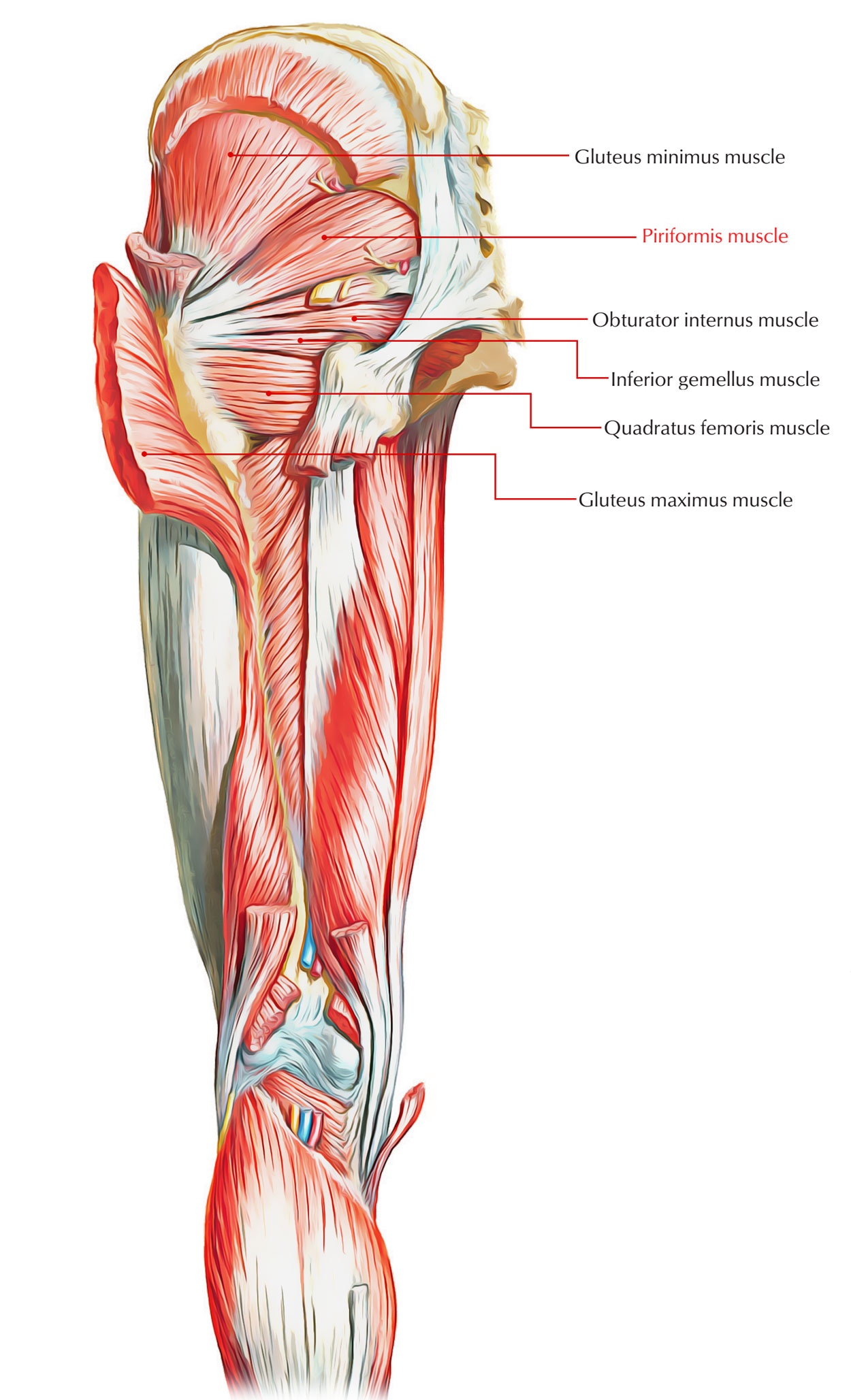Piriformis is a crucial landmark since it divides the greater sciatic foramen into two regions, one above and one below the piriformis. The piriformis muscle is the most superior of the deep group of muscles and is a muscle of the pelvic wall and of the gluteal region.
Origin
Passes laterally and inferiorly via the greater sciatic foramen and it stems from in between the anterior sacral foramina on the anterolateral surface of the sacrum.

Piriformis Muscle
Insertion
Connects to a facet on the upper margin of the greater trochanter of the femur, in the gluteal region and the piriformis passes posterior to the hip joint.
Nerve Supply
Ventral rami of first and second sacral nerves (S1, S2).
Actions
- It assists in turning the foot out, drawing the leg far from the body when the leg is bent and extension of the hip joint.
- Contraction of the piriformis muscle moves the body in various instructions depending upon which bones do exactly what.
- If the sacrum is steady the leg ends up however if the leg is fixed, movement will come through the pelvis.
- It assists to support the hip joint.
- It is the lateral rotator of femur when the hip joint is extended and its abductor when the joint is bent.
Clinical Significance
Piriformis Syndrome
- The piriformis muscle travels from the sacrum across the buttocks to the femur.
- The sciatic nerve is located perpendicular to and just below the piriformis muscle.
- Since of its proximity to the sciatic nerve, soreness and swelling (edema) of the piriformis muscle can trigger compression of the sciatic nerve, resulting in low back, buttock, and posterior leg pain. This is called piriformis syndrome.
Assessment
- Health examination often reveals unique tender locations in the piriformis muscle and increased pain with flexion, adduction, and internal rotation of the hip
- Recently, more recent diagnostic studies such as MR neurography and interventional MR imaging have been revealed to confirm the medical diagnosis of piriformis syndrome, MRI studies might be suggested to rule out lumbar disc herniation.
Causes
- The piriformis muscle can be hurt during grappling maneuvers that involve forceful external rotation, flexion, and abduction of the hip.
- A careful physical examination and history are required because this syndrome can mimic the symptoms of a lumbar disc herniation Piriformis muscle injury and subsequent piriformis syndrome are detected clinically.
Treatment
- The treatment of piriformis syndrome includes relative rest, osteopathic administration, physical treatment, and periodic corticosteroid injections.
- Lying on the stomach with the impacted hip flexed and externally turned eliminates Spasms of the piriformis muscle can be quickly.
- This maneuver puts the piriformis muscle in a relaxed position. Surgery is hardly ever indicated.

 (54 votes, average: 4.61 out of 5)
(54 votes, average: 4.61 out of 5)